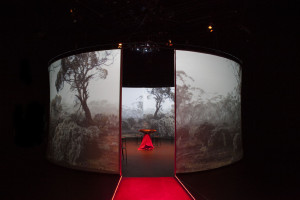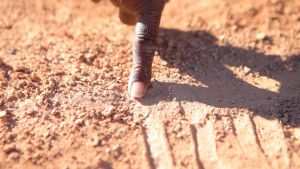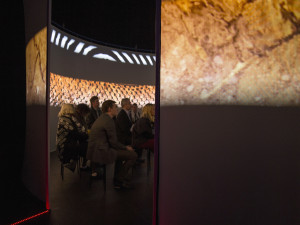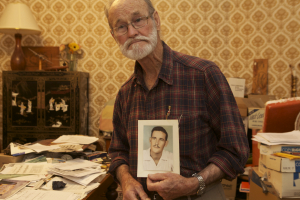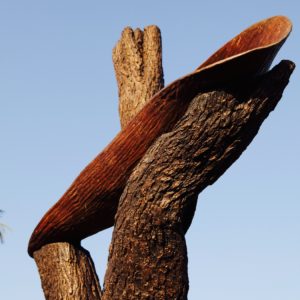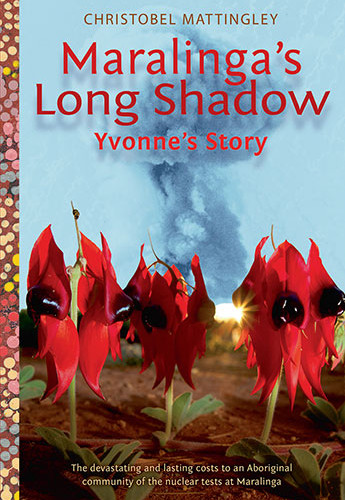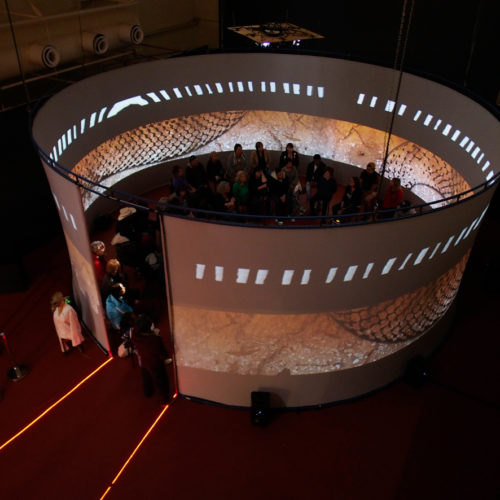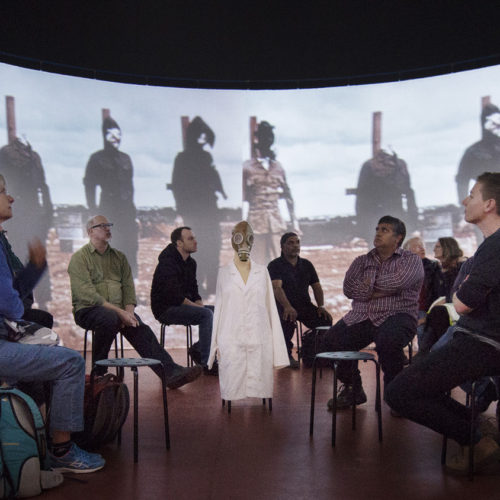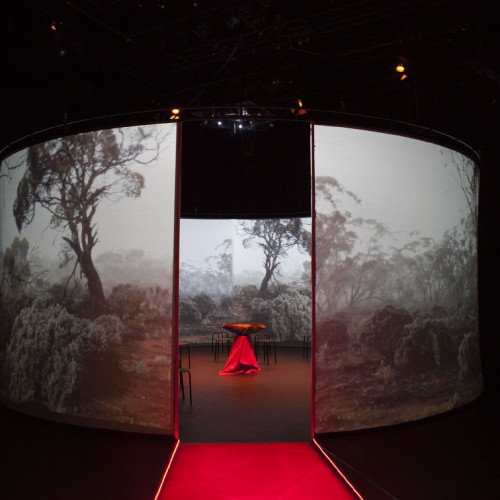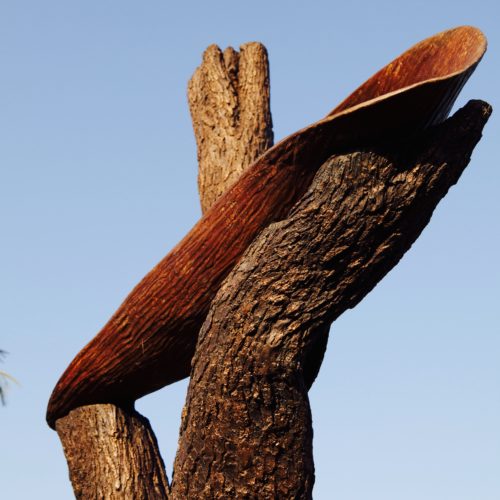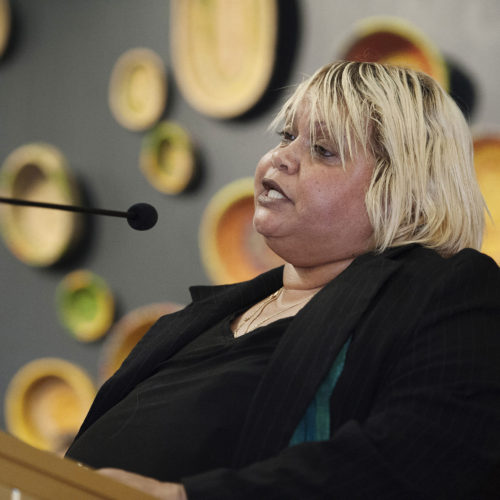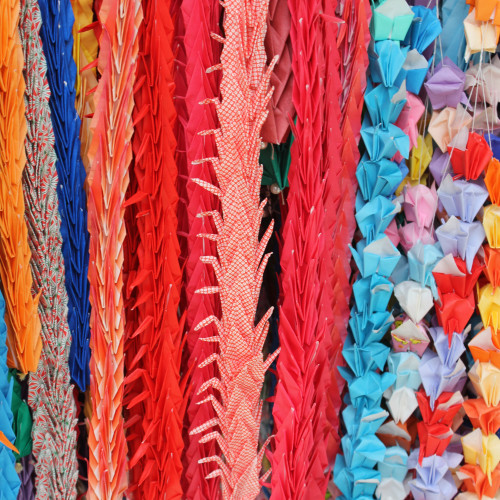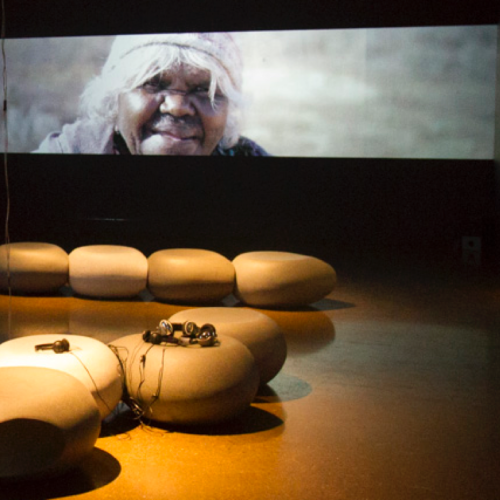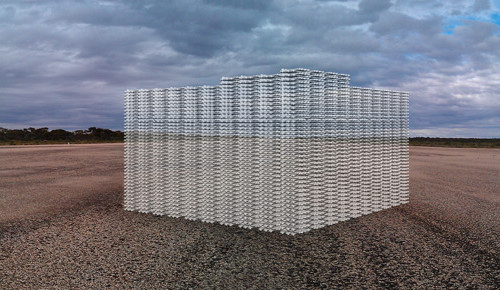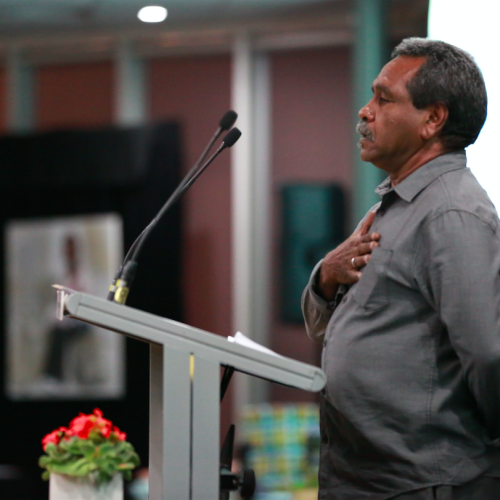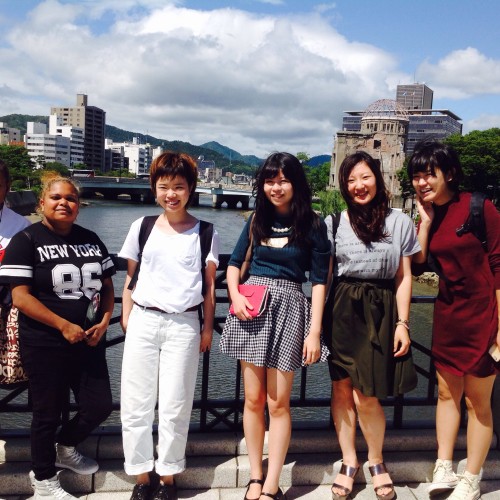-
Maralinga's Long Shadow: Yvonne's story wins NSW Premier's Award
- 7 years ago
- The annual NSW Premier's Awards for History, presented in Sydney on Friday 1 September 2017, saw one of our partnership projects honoured, when "Maralinga's Long Shadow: Yvonne's Story" took out the Young People's Hi[...]
‘Nuclear’: Arts showcase at Tandanya
17 September to 12 November, 2016
National Aboriginal Cultural Institute in Adelaide, South Australia
Involving more than 50 creative artists – photographers, filmmakers, digital artists, actors, musicians, painters, sculptors and writers, the ‘Nuclear’ showcase bears witness to the legacies of the atomic age.
Our stories come from atomic survivor communities – those who have experienced the atomic bomb. In Australia that includes Indigenous communities and nuclear veterans affected by British nuclear testing at Maralinga, Emu, and Monte Bello Islands. Britain exploded 12 major bombs and conducted hundreds of minor ‘trials’ on Australian country – with the complicity of the Australian government.
Atomic survivor stories remain relevant and illuminating within the contemporary international debate about ongoing testing and development of nuclear weapons, and also speak to current debates about Australia’s nuclear industry and proposed waste repositories in South Australia.
Across 2014-16, community arts company Alphaville has facilitated a program linking artists with communities that have experienced the atomic bomb. In South Australia, those communities include Indigenous Australians – Anangu – who were relocated from traditional lands at the time of the British-run atomic tests at Emu Field and Maralinga in South Australia; and nuclear veterans who served at these test sites during the 1950s and 60s.
The ‘Nuclear’ showcase, which is suitable for all ages, presents stories from these places and people, and fits within a long tradition of artists and communities responding to ‘the bomb’ and its long term effects. We all live with irreversible radiation impacts – affecting our environment, and our bodies. Plutonium half-lives are up to 24,000 years!
Running in conjunction with the ‘Nuclear’ showcase was a program of public events including:
– official launch held on 30th September, 2016
– music weekend ‘Sing Maralinga‘ 15th and 16th October, 2016
– Arts and Justice Seminar 26th October 5.30-7.30pm
Season ran 9.30-4.30 Monday-Saturday
For more information see the media coverage and reviews or http://www.tandanya.com.au/event/nuclear/
Introducing the creative works
The works sit at the creative junction between history, eye-witness testimony and artistic interpretation, and together constitute a creative response to the slow public reveal and long-term legacies (the ‘slow emergency’) arising from the nuclear bomb tests. A centrepiece is ‘Ngurini’ (Searching), an immersive digital projection made with members of the Yalata Anangu community. Another is ’10 Minutes to Midnight’ also for immersive screening inside our large cylindrical arena, and developed with nuclear veterans and the Balaklava community. For more on our immersive digital projections click here. Below is a short clip from Ngurini (Searching).
These digital art works are accompanied by exhibitions of photography –‘Portrait of a Whistleblower’ and ‘Talking Straight Out‘ a collection of images from campaigns against nuclear waste repositories; paintings – ‘Life Lifted into the Sky’; sculpture – ‘Fat Man’ and ‘Tree of Life: Gift of Peace’; and pottery – a collection titled ‘Ebay makes the bomb’. For more on ‘Portrait of a Whistleblower’ click here.
We are also pleased to include international stories and experiences of Hibakusha (the Japanese term for ‘atomic survivor’), which remain integral to Australia’s Cold War atomic test history; and also soundscapes and radio plays made with British nuclear veteran families. The public season of ‘Nuclear’ also features seminars, film screenings, and storyteller sessions.
The stories told by affected communities bear witness to the legacies of the atomic age. They remain relevant and illuminating within the contemporary controversy over ongoing development of nuclear weapons, and local debate on nuclear industry and waste repositories.
Last year South Australia instigated a Royal Commission into the Nuclear Fuel Cycle, and the Commission’s findings are the subject of current public consideration. It is timely to reflect on the findings of an earlier investigation – the Royal Commission into British Nuclear Tests in Australia, which in 1985 reported on the conduct and impacts of the experiments.
The exhibition fits within a long tradition of artists and communities responding to ‘the bomb’, and the works explore how local experiences have translated into community development and international campaigns for peace and disarmament.
Summary of creative works featured in ‘Nuclear’:
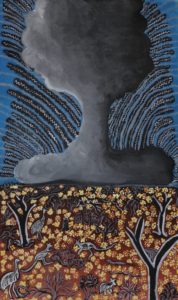
Bomb painting by Alinta Smart from Yalata Anangu community, in the collection ‘Life Lifted into the Sky’ – part of our showcase
10 Minutes to Midnight – digital projection: the countdown to the bomb
Ngurini (Searching) – digital projection: Anangu migration
Talking Straight Out – photographs: the Irati Wanti campaign
Portrait of a Whistleblower – a campaigner’s photographs & artefacts
Fat Man – soft sculpture: kimonos & human hair: the Nagasaki bomb
Tree of Life: Gift of Peace – bronze sculpture: the gift to Nagasaki
Life Lifted into the Sky – paintings by Yalata and Oak Valley women
Ebay makes the bomb – pottery and ink drawings: the nuclear age
The ‘Nuclear’ showcase has been assisted by the Australian government through the Australia Council its arts funding and advisory body, and by Arts SA, Country Arts SA/Regional Arts Fund, Graham F Smith Peace Foundation, Mayors for Peace Australia, Yalata Community Incorporated, Alphaville – arts science environment. Financial and inkind contributions from individuals and groups have also helped bring this exhibition to the public. Donations to help with public engagement and installation costs can be made via Alphaville arts company: info@nuclearfutures.org
